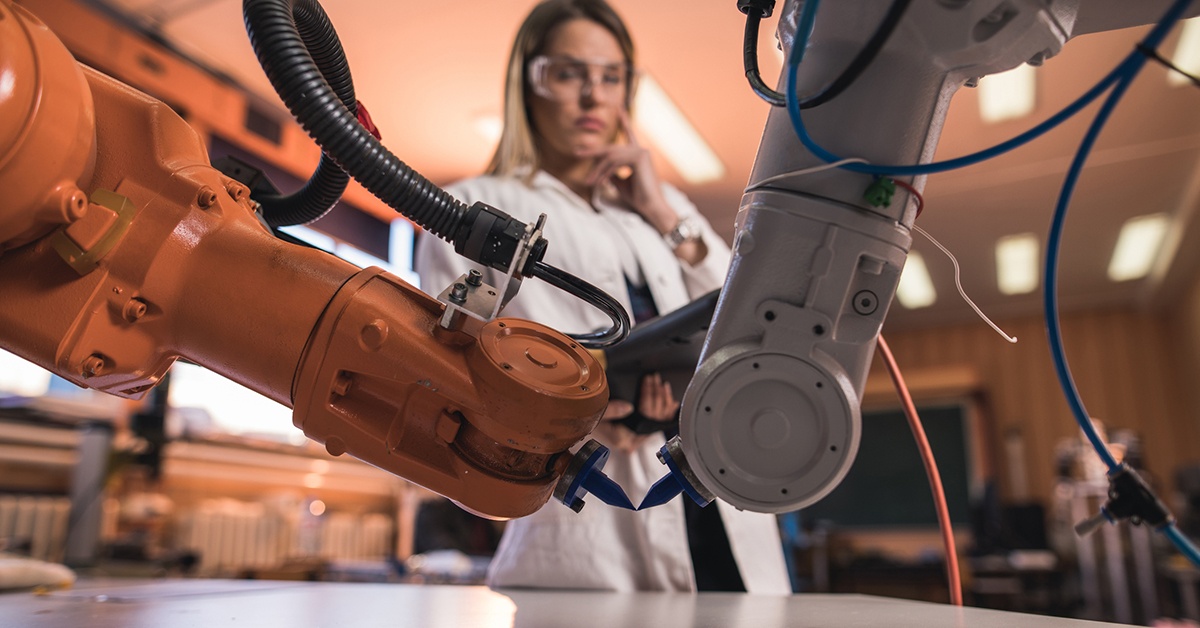
The demand for custom robotic cells is growing, as companies continue to integrate industrial robots into their processes for everything from assembly lines, to complex machining, to picking/packaging, to welding.
An Overview of Industrial Robotics
According to the International Federation of Robotics, global sales of industrial robots in 2017 increased 31 percent over the previous year to 387,000 units. New and innovative robot cells with advanced vision sensors, new tooling and end effectors, and part-feeding mechanisms are being implemented across all industries.
The problem most manufacturers face when producing these unique robotic parts and assemblies is proving compliance to ANSI/RIA R15.06 and other international robotics standards. Inspections and certifications for each part are time-consuming and expensive, especially as they continue creating new custom robotic cells for integrators. They need a mark of certification, but auditors and certification bodies can only certify what they have inspected.
Introducing the Robot Integrator Program
TÜV Rheinland’s Robot Integrator Program gives manufacturers one mark to cover all of their custom robotic cells. This will allow a manufacturer to list all robotic cells produced as long as they are fully compliant with the requirements of the integrator. This label can then be recognised by future inspectors/AHJs and others as a symbol that the robot cell is compliant with the standards listed on the label.
As opposed to a typical certification, where only specific cell types can be listed, TÜV Rheinland’s Robot Integrator Program will give manufacturers the flexibility to produce a wide variety of custom cells and apply a TÜV label to each one without an evaluation of each individual type of robot cell, as long as they remain compliant with the program.
How Does the Program Work?
Before the evaluation, manufacturers must submit a document package representative of the types of robot cells that they produce. This includes schematics, constructional drawings and component information, risk assessment, and functional safety information.
During the initial qualification audit, the auditor may request further documentation such as quality procedures or other relevant information. The auditor will also assess the competency of the staff and the staff’s knowledge of the standards in question. Based on this assessment, TÜV Rheinland will provide a comprehensive training presentation and documents covering ANSI/RIA R15.06.
Next, the auditor will assess the prospective integrators’ quality procedures per the procedures outlined in select sections in the latest revision of ISO 17025. This will include an evaluation of the integrator’s conditions to determine if they are suitable for producing fully compliant robot cells on a consistent basis. In addition, a fully built robot cell must be available for evaluation during the initial qualifying audit in accordance with ANSI/RIA R15.06. This must be able to run and function as it would in the end user’s environment.
Upon conclusion of the audit, the auditor will discuss the results of the evaluation and any further actions that must be taken by the manufacturer. If fully compliant, an initial confirmation will be given along with a letter of acceptance. Additionally, the artwork for the TÜV mark and an initial range of serial numbers for those labels will be provided. Once that is given, the client can begin marking the produced robot cells with the proper TÜV label.
This label can then be recognised by future inspectors/AHJs and others as a symbol that the robot cell is compliant with the standards listed on the label. The serial numbers on this label will be traceable on TÜV’s Certipedia website so that the validity of the label can be verified. Within 1-2 weeks, the compliant shop will also be viewable on TÜV’s Certipedia website.
In order to maintain compliance to the new program, manufacturers just have to continue producing robot cells that meet the requirements of ANSI/RIA R15.06. During follow-up audits, integrators must be able to present the auditors with the mandatory documentation upon request, including a checklist of each cell receiving a TÜV mark. Manufacturers must pay for additional serial numbers as needed before adding to their checklist and to their TÜV mark label.
The TÜV Rheinland Robot Integrator Program is the first certification program of its kind. Please contact one of our experts if you would be interested in implementing our new Robot Integrator Program at your facilities.
For more information, speak with our experts:



